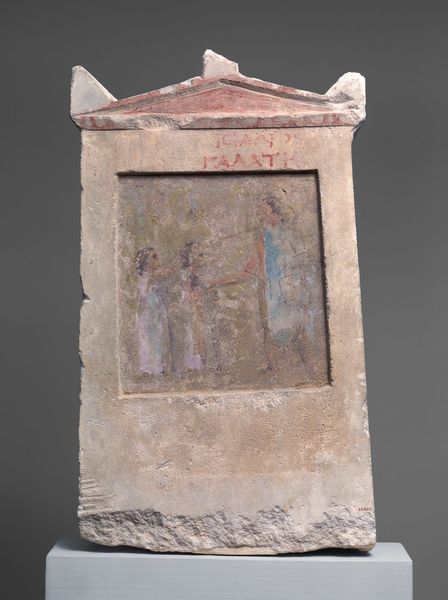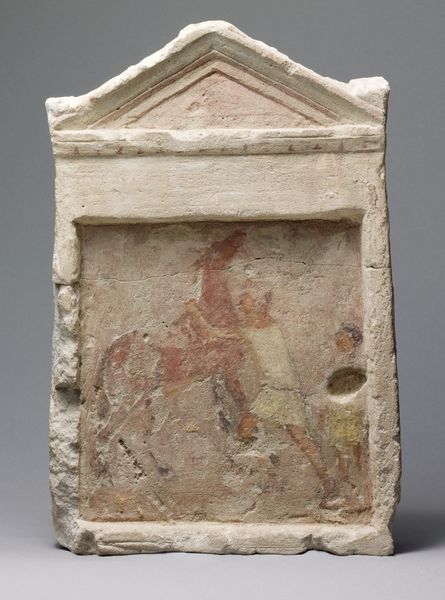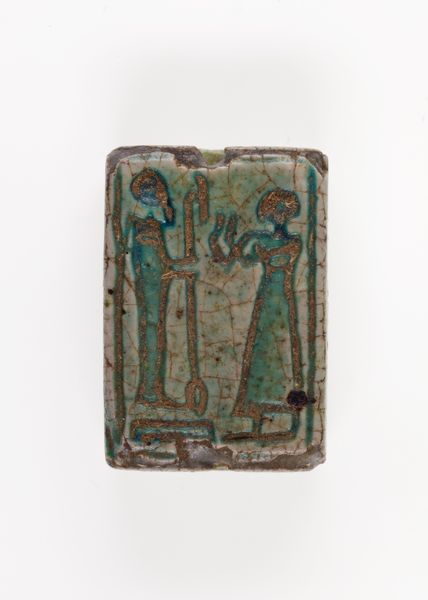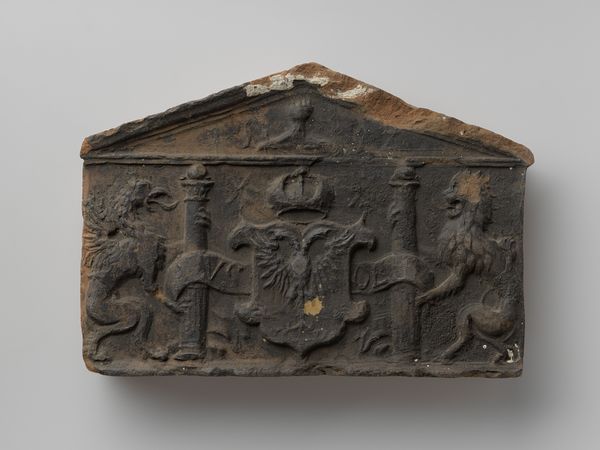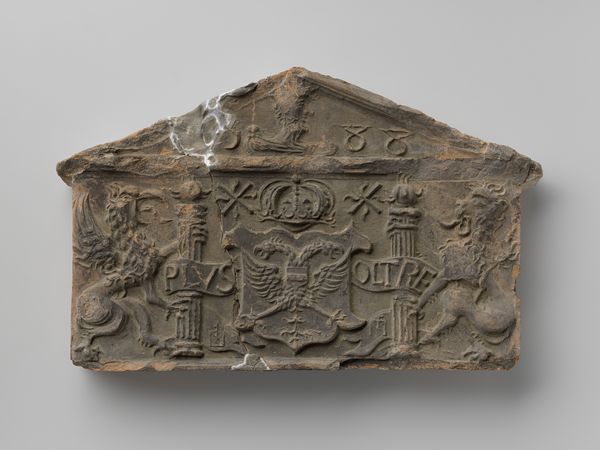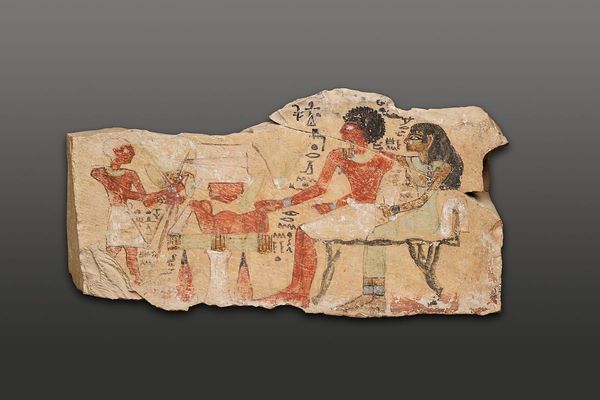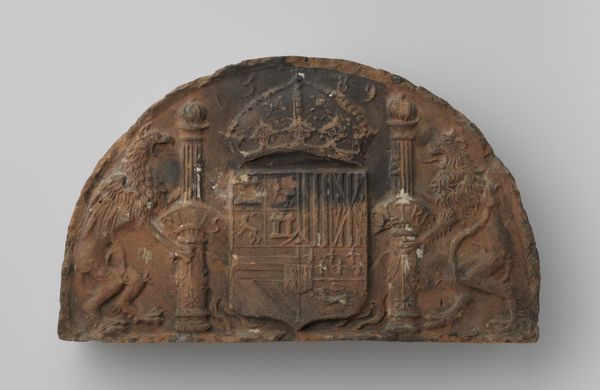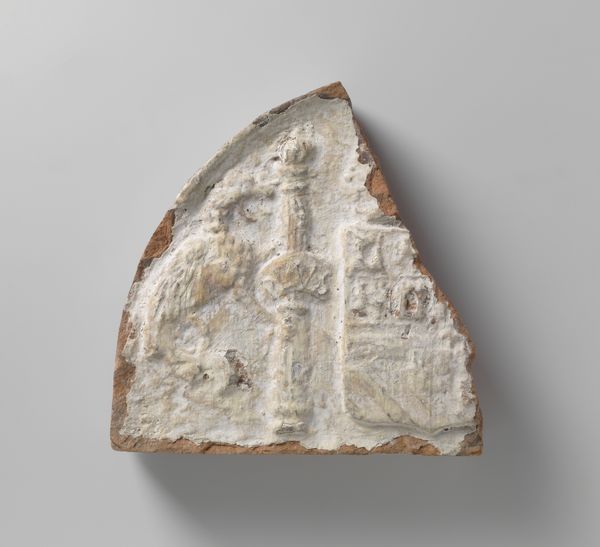
Painted Limestone Funerary Slab with a Soldier Taking a Kantharos from His Attendant 275 BC
0:00
0:00
mixed-media, carving, tempera, painting, fresco, sculpture
#
portrait
#
mixed-media
#
water colours
#
carving
#
tempera
#
painting
#
sculpture
#
greek-and-roman-art
#
landscape
#
figuration
#
fresco
#
ancient-mediterranean
#
sculpture
#
history-painting
#
mixed media
Copyright: Public domain
Curator: This is a Painted Limestone Funerary Slab with a Soldier Taking a Kantharos from His Attendant, dating back to 275 BC. It's currently housed at the Metropolitan Museum of Art. Editor: Wow, the texture! Even with the wear and tear, the slab retains such a tactile quality. I can almost feel the coarseness of the limestone and the subtle layering of the paint. Curator: Absolutely. These slabs were public displays of elite status, installed as grave markers for prominent individuals. Think of them as carefully crafted monuments of reputation. Editor: Reputation secured through labor. The carving itself represents countless hours of a craftsman's toil. Limestone isn't the easiest material to work with, either. Curator: The subject matter, too, reinforces social hierarchies. Here, the soldier receiving a kantharos, a type of drinking cup, highlights his power and status through ritualized consumption and control of service. Editor: I'm interested in how the colours speak across millennia. Despite the fading, the vibrant blue on the soldier contrasts with the muted earth tones. Were these choices symbolic or merely practical, given pigment availability at the time? Curator: Probably both! The blue would have been striking, and while symbolic meanings for color existed in ancient Greece, practical concerns always influenced artistic decisions. Think of the material procurement and workshop collaboration required for such pieces. Editor: And how would it have been consumed by the public? Was the intent merely honorific or did this somehow integrate into collective mourning practices? It's hard to gauge emotional impact given how time erodes so much meaning and social context. Curator: The funerary context suggests both honouring the deceased and participating in communal remembrance. Public display was key. The politics of memory are always at play. Editor: A fascinating interplay of commemoration and the cold, hard realities of material culture. One gets lost in its historical purpose yet the weight of the object reminds you about ancient production practices. Curator: Precisely! It highlights not just artistic intention, but also its social life and place within shifting political and ritual landscapes. Editor: I agree. Looking at this work now really solidifies the idea that an object can reflect personal status and broad political and economic circumstances, both.
Comments
No comments
Be the first to comment and join the conversation on the ultimate creative platform.

